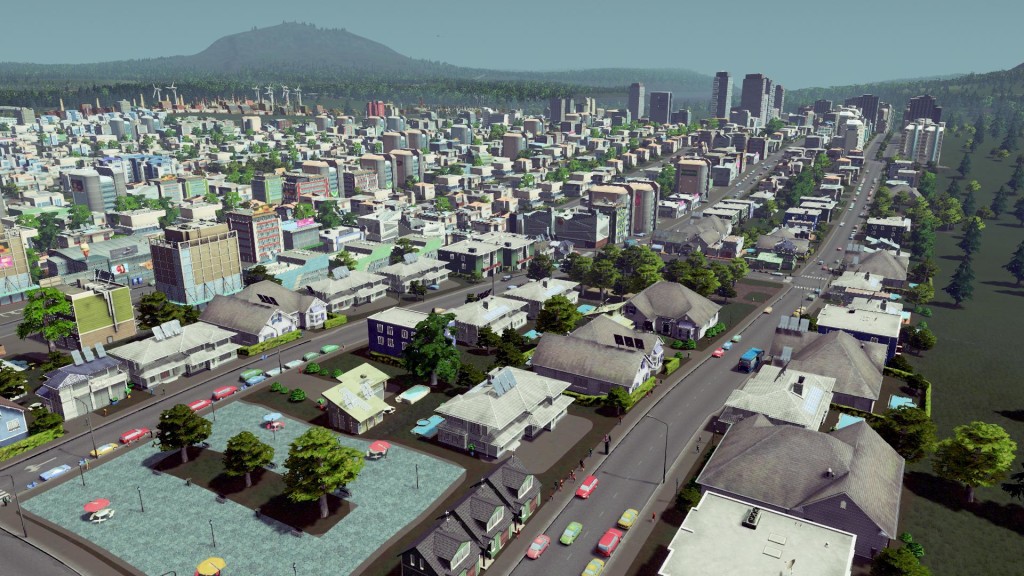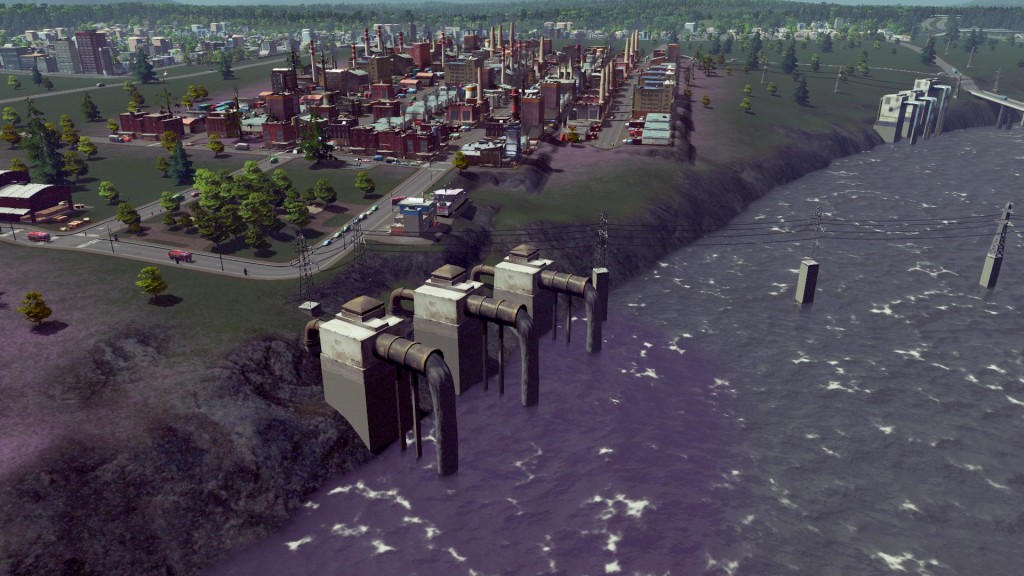Judging from the “mostly negative” reviews on Steam’s “Cities XXL” page (24% positive as of today’s writing), I suppose I can say that the market was really looking forward to a next-gen city-builder that they could sink their teeth into. The same could be said for “SimCity” when it launched in 2013, though the always-online connection (later patched) and the small map sizes dashed hopes almost as much. Sure, there are games like “Banished” and “Tropico 5” to help us pass the time, but a lot of us are craving for days when we could make huge megalopolises without the limitations that come with today’s technology. Heck, I spent years playing “SimCity” on the SNES and wouldn’t you know it…it didn’t freeze when cities got large and I didn’t have to contend with online DRM. Those were the days.
Anywho, we’re here to find out if “Cities: Skylines” (developed by Colossal Order and published by Paradox Interactive) is the next big thing. For those of you curious, Colossal Order and Paradox Interactive were the same folks who developed/published (respectively) “Cities in Motion 2“. Along those lines, I’d like to extend a big thank you to the folks at Paradox Interactive for providing me with a free press copy for review purposes.
First, let’s get something cleared up. Yes, there are residential zones, commercial zones, and industrial zones and yes, they are green, blue, and yellow respectively. Yes, you can build power plants, power lines, water towers/pumps, water lines, police stations, hospitals…all the things you’d expect from a typical “SimCity” game. The game even includes a version of the RCI meter, which tracks the demand for residential, commercial, and industrial zones in real-time. There’s no always-online connection required and while there is no multiplayer, Steam Workshop is supported and a level editor is available. This game might as well be called “SimCity 2015”, though I imagine that the folks over at EA might take issue with that. Long story short: “SimCity” fans can expect a “SimCity-like” experience, even if it appears to be a bit “cartoony”. I don’t know about you, but this makes me a happy camper.
What’s different, you ask? For one, you will need to construct power lines and water pipes, something that EA’s recent “SimCity” release did away with and instead opted to ship these utilities via roads. Thankfully, you can create instant roundabouts and toggle the height of your roads (something that the recent “SimCity” lacked). You’ll have the ability to create dams, manage sewer lines, relocate buildings (for a fee), and purchase new plots of land on the same map in order to expand your city’s reach. Creating districts (done via a simple paint tool) allows the player to toggle certain policies on a more individualized level…meaning that ordnances and the like no longer have to be city-wide if you don’t want them to be. You can also assign districts a certain build priority, meaning that you can tell them what type of business or industry to develop. This mechanic isn’t as deep as say, “SimCity: Societies” to where you can place individual structures of a particular type, but there’s more control here than your standard “SimCity” game.
What further impressed me was how well the water physics work, making the placement of sewage outlets all the more important to think about. You could, in theory, place a sewage outlet on top of a waterfall which then runs through your city via a stream or river. Of course, your populace may not appreciate a waterfall lined with their own feces (go figure). I also liked the fact that the game includes noise pollution, making me second guess my initial instinct to stick with wind turbines (as I’m often wont to do as they don’t create smog). Speaking of which, buildings will be unlocked via “milestones”, limiting what you’ll have from the get-go. This is nothing new…EA has done this repeatedly with their “SimCity” games, especially the latter ones.
EA’s recent “SimCity” tried to do something a bit new with the way resources work, so I can’t give them too much flak. On the other side of the coin, transporting resources between regions was either bugged or a pain to do. Here, imports and exports are done automatically. If your city produces a certain good locally, it’ll ship it to other buildings that require it. If your structures need something that you don’t produce locally, it’ll request it from the outside. Some of the resources on the map like ore will be limited so importing may be a necessity after a while. It’s important to stress that you don’t HAVE to produce a good locally and you may not want to for various reasons (because the factories that produce it pollute like mad, etc.). Again, this whole concept ties back with creating districts and specializing them. As a quick aside, connecting with the outside world not only allows you to import and export, but allows for the possibility of tourism and the revenue that come with it. Unfortunately for some, this “outside world” is imaginary and has no connection to other cities that you may have created (unlike “SimCity 4”).
There’s more to the game that I haven’t covered, but it would take quite a while to convey all the nitty-gritty details. Suffice it to say that I believe this game is worth the asking price of $29.99. It’s very easy to spend hours/days/months on a single map and fine-tune it to your liking, which is a tremendous value. The fact that it supports a map editor and Steam Workshop is all the more reason why the price tag is more than generous. Some may see “Cities: Skylines” as a “SimCity” clone, but honestly, who cares? If we put aside the fact that the former does things the latter doesn’t do, there aren’t enough stable and fun city-management games out on the market, so why complain? I, for one, am finally grateful for a current-gen city-builder that not only actually does the job correctly, but goes above and beyond my expectations.
Final Verdict: 9/10
—
Steam: http://store.steampowered.com/app/255710/
—
https://www.youtube.com/watch?v=am5bWYp0RYA&index=1&list=PLy-_-0rh3dPrX1rGCZfz6EkFdcL8RNBFh


